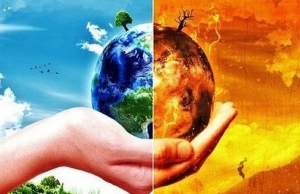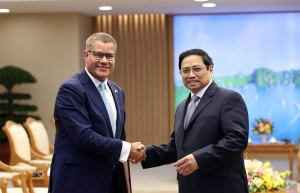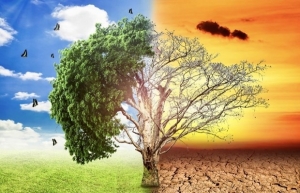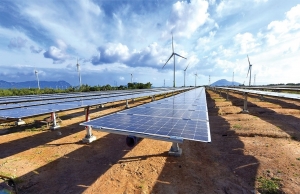Ways to fund Vietnam’s COP26 commitments
 |
| Donald Lambert - Principal private sector development specialist, Asian Development Bank |
Bravo. This was exceptional climate leadership.
The challenge is now to mobilise the funding. Estimates for the annual spending requirements on energy infrastructure range from $11 billion to $14 billion.
Traditionally, Vietnam borrowed from development partners to fund its energy infrastructure. However, concerned with public debt, the government is now focusing on private financing, and there are four underutilised sources that it should prioritise.
The first source is green banks. With the ratio of bank credit to GDP at 140 per cent, bank lending drives the Vietnamese economy and therefore must play a central role in Vietnam’s green energy transition.
Banks, however, are unfamiliar with green lending. For most, green banking is limited to financing large solar power projects.
Green banking entails much more, encompassing a range of collectively impactful investments that are too small to be funded through green bonds. Banks are best positioned to lend to businesses for these needs. To move green banking forward, the government needs to finalise and publish a taxonomy of what constitutes green assets, so that banks are clear on what is considered a green loan.
The State Bank of Vietnam (SBV) then needs to issue regulatory guidance. To be impactful, this guidance should include incentives. One option would be for the SBV to provide capital relief for green loans. Such capital relief could work in tandem with the regulator’s cap on loan growth while incentivising banks to prioritise green lending.
The final piece is banks’ capacity. Green lending involves developing a corporate strategy, green loan products, risk management policies, management information systems, key performance indicators, and public disclosures. Vietnam’s development partners could help to build this expertise.
The second sources is development partners’ private sector lending. If domestic banks can lead on the small green loans, development banks can lead on the innovative green loans. Floating solar, offshore wind, battery storage, and geothermal, are all relatively new in Vietnam but development partners can bring the needed international expertise. As private sector loans, they do not contribute to government debt.
Development partners bring not only their own money to these projects but also international co-financing. For projects where the Asian Development Bank (ADB) has co-lent in Vietnam, its $428 million of lending has raised $663 million of international financing. That is a multiple of 1.5!
To ensure that such catalytic financing is available for innovative green projects, the government needs to ensure a conducive policy environment. Any revisions to the SBV’s Circular 12, which regulates domestic enterprises’ foreign borrowings, should not restrict green borrowings.
The government should also respect the immunities under international treaties of development partners’ projects, including the co-financing they mobilise, and development partners’ local borrowers deserve to have their tax applications processed efficiently.
The third financing source is energy transition mechanism (ETM). The ADB has been piloting a new initiative in Southeast Asia in which blended finance is used to accelerate the retirement or repurposing of coal-fired power plants to replace them with cleaner, more renewable sources of energy. ETM is groundbreaking and has the potential to be one of one of the biggest carbon reduction programs in the world.
The ADB last year announced the ETM Southeast Asia Partnership with Indonesia and the Philippines, where full feasibility studies are continuing and pilot transactions are being prepared.
In Vietnam, the ADB is seeking to work with the government on a feasibility study to address the potential benefits. Such a study is non-committal and would equip the government with information on another potential source of funding to meet its net-zero commitments announced at COP26 while ensuring reliable and affordable power supply.
The fourth financing source is local institutional investors. Local banks’ and development partners’ resources are not enough to close the green financing gap. Fortunately, there is an untapped pool of capital: Vietnam’s life insurance companies and the public pension, Vietnam Social Security.
Life insurance assets were $28 billion as of July 2022 and are growing at an annual rate of around 20 per cent. Vietnam Social Security assets were $38 billion as of 2020 and are growing at around 10 per cent. This is nearly $10 billion of new investment annually.
Presently, 87 per cent of that funding for life insurers and 90 per cent for Vietnam Social Security is invested in low-risk and low-return government bonds and bank deposits. Even a small reallocation of their investment would open up billions for climate finance.
Institutional investor reform is complicated and will require widespread capital market reforms that go beyond the life insurers and Vietnam Social Security. However, it has the potential to be Vietnam’s most sustainable source of sustainable finance.
The 2022 United Nations Climate Change Conference (COP27) in Sharm El-Sheikh, Egypt, is rapidly approaching. These four underutilised resources can help provide the funding that will help Vietnam meet its climate goals.
 | National Strategy on Climate Change for 2050 approved Hanoi - Deputy Prime Minister Le Van Thanh has signed a decision approving the National Strategy on Climate Change for 2050. |
 | PM hails contributions of COP26 President Prime Minister Pham Minh Chinh has hailed President of the 26th United Nations Climate Change Conference (COP26) Alok Kumar Sharma, who is also British Minister for the Cabinet Office, for his contributions to stepping up the delivery of COP26 commitments. |
 | Vietnam calls for comprehensive approach in addressing climate change challenges Vietnam called for a comprehensive approach in addressing challenges relating to climate change, environment and bio-diversity, at a meeting of the Economic and Financial Committee of the United Nations General Assembly’s 77th session on October 10. |
 | Overseas investors chime in on climate change conundrum As one of the countries increasingly impacted by climate change, Vietnam is accelerating its crucial transition to become a green economy, which opens up new business opportunities for foreign direct investment. Last week’s webinar on Vietnam’s green economy highlighted the opportunities for sustainable investment. |
What the stars mean:
★ Poor ★ ★ Promising ★★★ Good ★★★★ Very good ★★★★★ Exceptional
Related Contents
Latest News
More News
- Heavy industries set for pilot greenhouse gas quotas (December 25, 2025 | 10:00)
- Swedfund invests in MSME growth and climate action in Vietnam (December 19, 2025 | 11:42)
- GreenYellow brings solar energy to light up remote schools in Tuyen Quang province (December 19, 2025 | 08:00)
- Charge+, Grab partner to develop EV charging network in Vietnam (December 18, 2025 | 17:11)
- Linking sci-tech and innovation to Vietnam’s net-zero future (December 18, 2025 | 14:31)
- Driving double-digit growth through green and circular transformation in Vietnam (December 17, 2025 | 09:00)
- Standard Chartered and ACCA deepen collaboration to develop Vietnam’s talent for a sustainable future (December 15, 2025 | 18:18)
- Schaeffler reports strong early output from Dong Nai solar project (December 12, 2025 | 15:16)
- Forestry conference highlights biodiversity and sustainability goals (December 09, 2025 | 13:35)
- Home Credit honoured among top 10 sustainable companies in trade and services (December 09, 2025 | 12:18)

 Tag:
Tag:




















 Mobile Version
Mobile Version